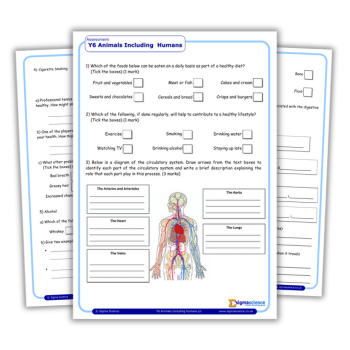Why We Made Our Own Post-P Scales Assessment System

Post-P scales, what should an assessment system for pupils with autism and learning difficulties look like in practice? One trio of education professionals believe they may have the answer…

Teachers of children with autism, and severe and moderate learning difficulties would likely appreciate a crystal ball that could tell them how their teaching and goal-setting will affect a learner’s development in the long term.
Instead, we have learning assessments, which have often constrained teachers by requiring that a learner’s progress fit a standardised format so that it can be measured. As many will be aware, in reality these children’s learning needs to fit with their development as and when it happens – something that can be very difficult to predict.
Dr. Liz Pellicano, a developmental cognitive scientist and former director of the Centre for Autism Education Research, has previously spoken of ‘reverse transition’ – a process based on the following:
• Researching first • Applying and putting research into practice • Listening to, and consulting with, ASD, MLD, SLD learners and their families
According to Dr Pellicano, families and individuals with these type of needs ought to be more involved in any consultation processes they must undergo, and that their input should be used to inform both future cognitive development research, and where support funding ought to be directed.
It’s often been the case that families and their dependents are infrequently consulted with regards to the value of such research and its impact on their lives.
So how can we do things differently?
Future steps
Taking on board this notion of ‘reverse transition’, we embarked on the process of developing something unique designed to meet the needs of individuals with autism spectrum disorder, including those with additional severe to moderate learning needs.
We call it PAGS Autism – Personalised Assessment and Goal Skills. It’s a framework intended for learners of all ages with autism and/or severe to moderate learning difficulties. It’s skills-based, appropriate for all levels and provides information that can be used to inform personalised learning for progress, while also offering the potential for school development.
The PAGS Autism framework aims to guide learners, families, practitioners and professionals and show them their future steps in a practical way, while at the same time recognising the learner’s achievements and gauging their progress.
Learners and adults working with PAGS Autism will be given access to a visual representation of the progress the learner is making in five distinct areas: ‘Communication and Interaction’; ‘Cognition and Learning’; ‘Emotional and Self Understanding’; ‘Social Interaction and Social Awareness’; and ‘Sensory Regulation and Physical Development’.
Individual progress
What sets this particular framework apart is that it’s built around a recognition that every learner is different. As previously noted, P levels have traditionally been narrow in measuring detailed progress for SEND learners. Under this older model, the curriculum was not always connected to the assessment, and wasn’t supported by qualitative data.
What we’ve attempted to do is devise an assessment that’s relevant to the curriculum that individual learners need. The information PAGS Autism provides can be used to set targets for developing skills that prepare those learners for adulthood. It’s important to note that this is an assessment system which has a developmental structure, which tracks individual progress.
The basis for PAGS Autism is Piaget’s four stages of development, from infancy to adulthood (see ‘Piaget’s Progress’). What we’ve tried to do is consider these in relation to the impact of ASD and related neurological conditions on individuals’ memories and capacity for learning and generalising, so that the opportunities for these learners to acquire important skills are maximised.
We explored how skills in each of aforementioned assessment categories are typically developed from the age of 18 months onwards, removing the need for an upper age limit. What we’ve ultimately ended up with is an assessment format that’s user friendly and practical, and which allows professionals to participate in the learner’s goal setting in consultation with parents and carers.
How it works
PAGS Autism provides an overview of the concepts that a learner or adult has understood and mastered, while identifying potential steps available to them for further learning. The five areas covered by the assessment are laid out in developmental sections. The category ‘friendships,’ for example, would fall under ‘Social Interaction and Social Awareness’. Each developmental section has three main stages – Interim, Concept Operational and Advanced. A set of questions and statements is provided to help guide assessors in gauging the learner’s unique profile.
This first part of the assessment then leads to a mapping process, in which any progress or regression is highlighted. This is also the point at which answers will be provided regarding what the learner needs and how practitioners can meet and support their acquisition of skills. Any goals and targets that are identified at this stage can then be fed into a child’s annual EHCP review.
In this way, the PAGS Autism framework is substantially different from the comparatively prescribed options for target setting and progress tracking typically offered by the assessment systems that are used currently. It’s a new format that enables practitioners to facilitate bridging between individuals’ skillsets in different settings, be it at school, at home or within the wider community.
Workload benefits
What we want to see is learners with ASD and severe or moderate learning disabilities assigned their own suggested curriculum, complete with attached objectives, activities and resources appropriate to their assessed developmental level. The PAGS Autism assessment furthermore employs a scoring system that can produce the kind of robust data that Ofsted inspectors will require.
Piaget’s Progress
According to the Swiss developmental psychologist Jean Piaget, the four stages of intellectual development from birth through to adolescence consist of the following:
Sensorimotor: Birth, up to 18-24 months Preoperational: Toddlerhood (18-24 months) through to early childhood (7 years) Concrete operational: Ages 7 to 12 Formal operational: Adolescence through to adulthood
We will be piloting the new PAGS Autism framework assessment from December onwards, and are currently looking for pilot schools interested in getting involved. For more details, contact us on 07756 265 545 or visit felserconsulting.com
Allison Hope-West is an independent autism consultant and trainer, and a tutor based at the University of Birmingham
Carolyn Godden is head of a specialist provision for complex communication difficulties at a mainstream secondary school
Feliciea Jibson is a former head of post-16 and 19-25 provision, now working as an autism education consultant










